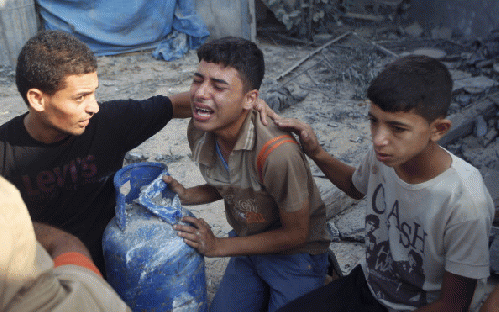Cross-posted from The Intercept

Palestinian relatives mourn for victims of the Duheir family, near the rubble of their home, after it was destroyed by an Israeli air strike in Rafah on July 29, 2014, in the southern of Gaza strip.
(Image by Said Khatib/AFP/Getty Images) Details DMCA
As I've written many times before, "terrorism" is, and from the start was designed to be, almost entirely devoid of discernible meaning. It's a fear-mongering slogan, lacking any consistent application, intended to end rational debate and justify virtually any conduct by those who apply the term. But to the extent it means anything beyond that, it typically refers to the killing of civilians as a means of furthering political or military goals.
Below are two charts reflecting the deaths of civilians, soldiers and "militants" in both Gaza and Israel since the July 8 Israeli attack began. The statistics used are unduly generous toward Israel, since "militants" in Gaza are often nothing more than residents who take up arms to defend their homes against an invading and occupying army. Even with that generous interpretation, these numbers, standing alone, tell a powerful story:
If you landed on earth from another planet this week, knowing nothing other than the most common use of the word "terrorism," which side do you think would most frequently be referred to as "terrorists"?
Often, the most vivid illustration of the criminality of this attack comes not from data but from isolated stories. Yesterday, for instance, "in Khan Younis, five members of the Najjar family, which lost 21 people in a previous strike, were killed." Meanwhile, "in the Al Bureij refugee camp in central Gaza, an airstrike from an F-16 killed the mayor, Anis Abu Shamala, and four others in his home, some of whom had taken refuge there from intense artillery shelling nearby."







